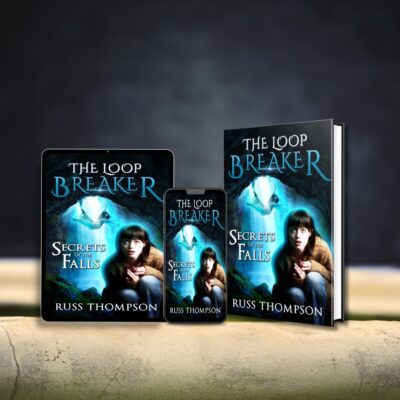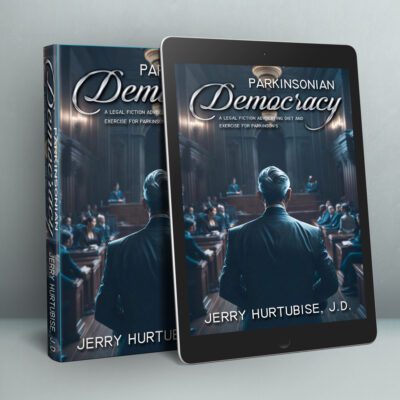When Jeff Kinney’s Diary of a Wimpy Kid first debuted in 2004 and Lemony Snicket’s eleventh novel in A Series of Unfortunate events was published later that same year, another great book was about to hit shelves — The Seven Basic Plots: Why We Tell Stories by Christopher Booker.
Though most will recognize some of Booker’s most popular plotlines like The Quest, Rags to Riches, and the Voyage and Return, there are still four more lesser known plots that are just as important, and we are going to talk about three of them today:
- Overcoming the Monster
- Tragedy
- Comedy
Overcoming the Monster
1. The Threat
For Thorin Oakenshield, it was the whisper of a dragon. For Harry Potter, the rumor of Lord Voldemort. Whatever your character’s “threat,” it’s almost always a danger large enough to not only hang over their head, but typically their entire community at large. That is what sets Overcoming the Monster apart from The Hero’s Quest, because suddenly the threat is complex enough to extend beyond the central protagonist and out into the world, which makes it — as Stephen Sommers wrote in The Mummy screenplay — “everybody’s problem.” That gives the threat more of a punch, because it means that the hero won’t be the only one to suffer if he fails.
Consider Beowulf. It’s the oldest English epic, and just as dramatic as it is timeless. You know the story: Beowulf comes to town to help fight off a threat; a monster. It’s pretty cut and dry, once you get into it, but it doesn’t always have to be. Take Red Riding Hood, for instance — a little girl is immediately warned about straying off the beaten path before continuing on into the woods to her grandmother’s house.
Sure, we know that the danger is a wolf, but at first read it sounds like the threat only applies to Red herself. That’s where the second act of the plot comes in.
2. The Journey
Otherwise known as “The Call,” this is the scene where your hero will officially be told to fight the monster. Maybe it’s the mayor making an official request, maybe it’s the village elder giving an order, or maybe it’s the hero herself– making an internal promise or vow about personal gain. For Red Riding Hood, it was a simple nod to her mother as she accepted the food basket to take to her sick grandmother.
This is also the scene where you have to establish the threat with a meeting; a moment where the monster and hero come face to face. In Beowulf, this scene begins with a feast and ends in murder. Red Riding Hood got off easy in comparison, and only had to endure a forced conversation with her future foe before slipping off on her merry way.
3. Outmatched and Overwhelmed
After The Journey, your hero will not find a quick escape but an impossible challenge: a battle against the dreaded threat that you’ve been building up throughout the entire story. It’ll be the same as before, only this time when they meet, the monster will have every advantage over the hero.
For Beowulf, that means an underwater battleground against an underwater monster (giving the threat the ultimate upper hand). For Red, that means walking into a trap where the wolf holds all the cards.
4. Overthrown
Now that you’ve set up a scene that clearly puts your hero at the disadvantage, you have to conveniently throw something out there that’ll tip the scales and help them win the day. Our classic hero, Beowulf, manages to find a giant’s (read: magical) sword and cut off his monster’s head. Red doesn’t get nearly so lucky — in fact, she gets swallowed up by the big bad wolf. Luckily, a Lumberjack saw the whole thing, and frees both Red and her grandmother.
Coincidence? Not when the whole plot is counting on it, it’s not. Likewise, the heroes in tragedies never fare so well.
Tragedy
1. Anticipation
Like Overcoming the Monster, a Tragedy plotline relies heavily on the ending. In fact, without a tragic ending, a story could not be counted as a tragedy at all.
Take Hamlet, for example. We meet our hero after just learning that his kingdom is busy gearing up for a war, but rather than brandishing a sword, he’s consumed by grief from his father’s sudden death and disgust for his mother’s new marriage to his uncle. This is an obvious set-up scene of Anticipation, the first step to writing a smooth tragedy. Just as you found Prince Hamlet in the first act of his story, be sure to give your character some initial sense of unfulfillment.
2. (Perchance to) Dream
Now that you’ve established a hero who is unhappy, go ahead and sprinkle in some temptation that’ll call to your protagonist. For Hamlet, it’s the ghost of his father — a vision that he can’t quite convince himself is really there (or really not, for that matter). Nevertheless, the idea of someone poisoning his father slowly begins to eat away at him, and it isn’t long before Hamlet sets a trap to discover the truth.
All too soon, Hamlet learns that his uncle really did murder his father, and immediately begins to plan his revenge.
This is vital for the second scene. As an author, you can’t just leave a character to stew in a limbo of indecision for too long or it’ll only come across as boring. Instead, kick your character after the temptation you just laid down, and give your audience something to root for.
3. Frustration
At this point, your character should be chasing whatever it is they want and grabbing for it with both hands. Hopefully, your readers are on the edge of their seat after them, leaning into their book as they race down the page. It’s obvious that they’re waiting for the worst to happen, but you can’t give it to them…
Not yet, anyway.
Instead, use this scene to stretch things out; don’t be afriad to build up the fire as you raise the stakes higher and higher. Shakespeare, for example, first introduces the characters of Rosencrantz and Guildenstern in this act, and dismisses them just as quickly after using them to give Prince Hamlet a brush with death. So go on, throw in some twists and turns to shake your reader! If you’re doing it right, they’ll love every minute leading up to Act Four.
4. Loss of Control
This is the scene to remind your reader that they’re reading a Tragedy with — you guessed it — a tragic ending. Hamlet finally collapsed behind the curtain after the death of not only Prince Hamlet, but his immediate (royal) family, with Denmark’s questionable future sealed with Prince Fortinbras’ entrance.
Just as Hamlet buckled under his task, so must your hero meet their own foul end. As Kathleen Lourde wrote, “In the course of a tragic story, the author must elicit fear and pity, preferably include what Aristotle calls reversal and recognition, and provide a catharsis for the audience’s feelings. It should deal in universal and general truths and principles such as choice, fate, or the nature of being human.”
All three come into play during Hamlet’s final moments. For example, Uncle Claudius exemplifies the nature of being human when he decides to poison Hamlet’s drinking cup out of nervous fear. The Queen, forever just out of the loop, makes the choice to ignore her husband’s warnings and drink out of the cup in a moment of excitement. And, of course, Hamlet himself involves fate when he tells his friend Horatio, “There’s a special providence in the fall of a sparrow. If it be now, ’tis not to come. If it be not to come, it will be now. If it be not now, yet it will come—the readiness is all.” In other words, it’ll happen when it happens, and I’ll die if I’m meant to.
Give your own tragedy some of these vulnerable points, and you’ll have yourself a real sob story. Of course, that’s not to say a rough tug on the heartstrings is the only way to draw a few tears.
Comedy
1. Uncertainty
Comedy, according to Christopher Booker, cannot function without a good romance to back the plot up. If this pertains to your story, then by all means, read on! If not, all you really need to know is what David Noller presented in 2011: “Comedy meta-plot Basic purpose: to build an absurdly complex set of problems which are then remarkably or even miraculously resolved at the climax.” For a romantic comedy, those problems usually act to keep the hero and heroine apart, too.
And yet, before any complications and their crazy circumstances split the two characters up, it’s always best to start things off with a distincly human element and create a few reasons as to why the two characters hadn’t dated before.
Perhaps their families hate each other. Maybe the protagonists themselves hate one another. At least, that’s what they think, anyway, and those confused trains of thought are what you as the author have to set up.
2. It Gets Worse
Writing a comedy is what the phrase, “It’ll get worse before it gets better,” was penned for, and it’s exactly what you have to accomplish in the Second Act. As sitcom writer Andy Hamilton said, “Make sure you invest in a character. Anyone can write jokes. Well, almost anyone. But if you are writing a sitcom it’s the characters that make it interesting. They have to resonate.” Same goes for writing a book.
Use this scene to not only establish your characters as living, breathing people, but also as complicated chatterboxes who have their own flaws and hang ups about getting into a relationship.
3. The Truth Comes Out
As hard as you might have your audience laughing, now is the time to pull back and get a little serious. Usually, one character will discover something about the other, and their whole perspective will change. Other times, a particularly bold character will actually admit a misunderstanding or vulnerability, forcing the soon-to-be love interest to change his or her perception.
4. Happily Ever After
Though a cliche ending, it certainly has a nice ring to it. Don’t be afraid to do away with the silly notions that were holding your characters back before, and really let them embrace each other as equals in this final scene. In fact, most like to tie up their story with a nice maritial bow at this point, but don’t feel like you have to rush your protagonists into anything. As long as they’re together, you’ve succeeded.







